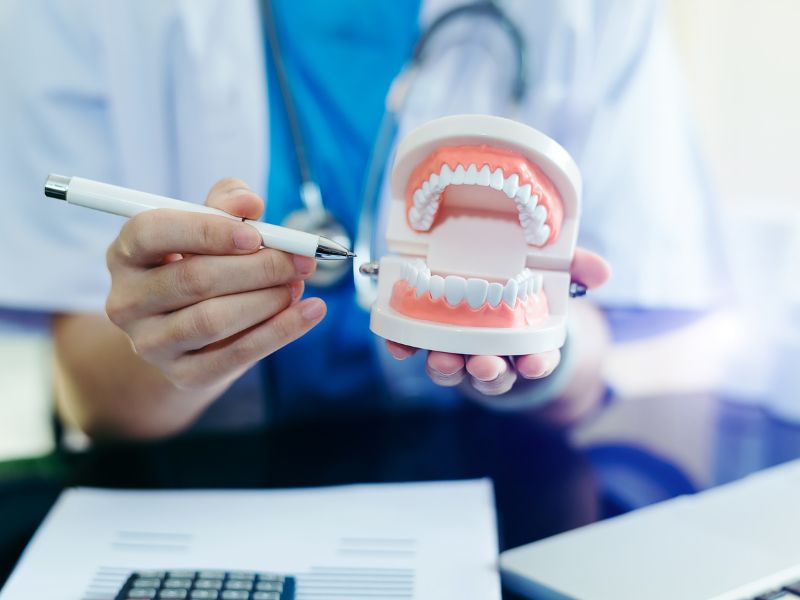
Ridge modification, a surgical procedure, restores the natural contour of the jawbone, ensuring optimal dental implant placement and oral rehabilitation. Recent advancements have significantly improved the effectiveness, efficiency, and predictability of this procedure.
The dental practice in Pleasantville, NY offers ridge modification to help the health of your jawbone to improve implant success.
What is ridge modification?
Ridge modification also referred to as ridge augmentation, is a dental surgical procedure that involves reshaping and enhancing the contours of the alveolar ridge, the bony structure that supports the teeth. This procedure aims to correct ridge deficiencies, deformities, or irregularities caused by tooth loss, periodontal disease, trauma, or congenital conditions.
Ridge modification involves augmenting the ridge with bone grafts, recontouring surrounding tissue, or using other techniques to create a more ideal environment for dental restorations, such as implants, dentures, or bridges.
Types of ridge modification
- Vertical Ridge Augmentation: Increasing bone height.
- Horizontal Ridge Augmentation: Increasing bone width.
- Combined Ridge Augmentation: Addressing both height and width.
When is ridge modification indicated?
Ridge modification is typically indicated in the following situations:
Tooth Loss and Extraction
- Post-extraction ridge resorption
- Insufficient ridge width or height
- Alveolar ridge atrophy
Dental Restoration
- Implant placement (to ensure optimal implant stability)
- Denture stability and retention
- Bridge or fixed partial denture support
Periodontal Disease
- Advanced periodontal disease with significant bone loss
- Gum recession and exposed roots
- Furcation defects
Trauma and Injury
- Alveolar ridge fractures
- Tooth avulsion or displacement
- Facial trauma affecting the jawbone
Congenital or Developmental Issues
- Congenital ridge defects
- Developmental abnormalities (e.g., cleft palate)
- Bone dysplasias
Other Indications
- Insufficient attached keratinized tissue
- Ridge deformities or irregularities
- Previous failed dental restorations
- Bruxism or parafunctional habits
Exploring advances in ridge modification
Recent advances in ridge modification:
Surgical Techniques
- Minimally Invasive Surgical Techniques (MIST)
- Piezosurgery (ultrasonic bone surgery)
- Laser-assisted ridge modification
- Computer-guided surgery
Tissue Engineering
- Platelet-rich plasma (PRP) therapy
- Platelet-derived growth factor (PDGF)
- Stem cell therapy
- Bioactive scaffolds
3D Printing and CAD/CAM
- Customized ridge augmentation
- Patient-specific implants
- 3D-printed bone substitutes
Digital Imaging and Planning
- Cone Beam Computed Tomography (CBCT)
- 3D scanning and modeling
- Virtual surgical planning
The procedure involved in ridge modification
Here’s a detailed, step-by-step guide to the ridge modification procedure:
Step 1: Anesthesia and Preparation (10-15 minutes)
- Administer local anesthesia or sedation.
- Prepare the surgical site with an antibacterial solution.
- Position the patient comfortably.
Step 2: Incision and Flap Elevation (15-30 minutes)
- Make an incision in the gum tissue.
- Elevate a mucoperiosteal flap to expose the ridge.
- Retract the flap to access the bone.
Step 3: Bone Harvesting (15-30 minutes)
- Harvest bone graft material (autograft or allograft).
- Prepare the graft for placement.
Step 4: Bone Graft Placement (30-45 minutes)
- Place the bone graft on the deficient ridge.
- Secure the graft with screws or pins (if necessary).
Step 5: Soft Tissue Recontouring (15-30 minutes)
- Resect or augment soft tissue as needed.
- Reposition tissue to achieve optimal contours.
Step 6: Membrane Placement (10-15 minutes)
- Place a resorbable or non-resorbable membrane.
- Secure the membrane with sutures or tacks.
Step 7: Wound Closure (10-15 minutes)
- Close the incision with sutures.
- Apply tissue adhesive.
Step 8: Post-Surgical Care
- Provide post-operative instructions.
- Prescribe pain management and antibiotics.
- Schedule follow-up appointments.
Conclusion
Ridge modification is a highly effective and predictable surgical procedure for enhancing the shape and contours of the alveolar ridge, ensuring optimal support and stability for dental restorations. By addressing ridge deficiencies and deformities, this procedure improves the aesthetic and functional outcomes of implants, dentures, and other restorative treatments. With advancements in surgical techniques, bone grafting materials, and tissue engineering, ridge modification has become a vital component of comprehensive oral rehabilitation. With proper planning, execution, and post-operative care, ridge modification can yield long-lasting, successful results, making it an indispensable treatment option in modern dentistry.
